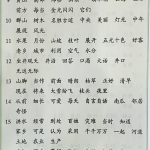[A redacted and edited version of this article was published in the China Daily] Nowhere is man freer than on the field of battle, where it is a matter of life and death, wrote Leo Tolstoy in War and Peace. One way of determining people’s morality is by observing their reactions during a crisis. Western audiences have offered three types of reactions to the recent virus … [Read more...] about An Outbreak of Sinophobia and Schadenfreude in the West
The Tragicomedy of Errors: China, British Imperialism, and the Opium Wars
Julia Lovell, in her new book The Opium War: Drugs, Dreams and the Making of China, finds something funny in the tragedy Great Britain has many reasons to feel great about itself. Its empire was the largest in history and covered over a fifth of the world's population. It had more Asian and African colonies than any other European power. It came, it saw, it divided, and it … [Read more...] about The Tragicomedy of Errors: China, British Imperialism, and the Opium Wars
The Economist and the South China Sea: It is “complex” if I can’t understand it
The Economist is often held prisoner by its own prejudice arising from its whatever-China-does-internationally-is-wrong stance, and a recent article on the South China Sea disputes proves it. Behold the latest offering from intellectual dungeons of the The Economist: "The devil in the deep blue detail". Sadly, but not surprisingly, the newspaper warns against the … [Read more...] about The Economist and the South China Sea: It is “complex” if I can’t understand it
Five reasons why China will not invade Taiwan, and an analysis of Cross-strait Relations
‘So solidly built into our consciousness is the concept that China is conducting a rapacious and belligerent foreign policy, that whenever a dispute arises in which China is involved, she is instantly assumed to have provoked it.’ — Felix Greene, 1965. When a superpower is engaging in full hegemonic and supercilious display, another country with slowly increasing … [Read more...] about Five reasons why China will not invade Taiwan, and an analysis of Cross-strait Relations
India v/s China: We’ve got Facebook! What’ve you got?
An interesting analysis in TIME magazine, to the extent that it tries to be an analysis: The ChIndian Century And don't forget to check out these two accompanying arguments, one for India and one for China: The Case for India: Free to Succeed The Case for China: The Power of Planning I plan to blog about this general issue sometime soon. Right now however, I just … [Read more...] about India v/s China: We’ve got Facebook! What’ve you got?


